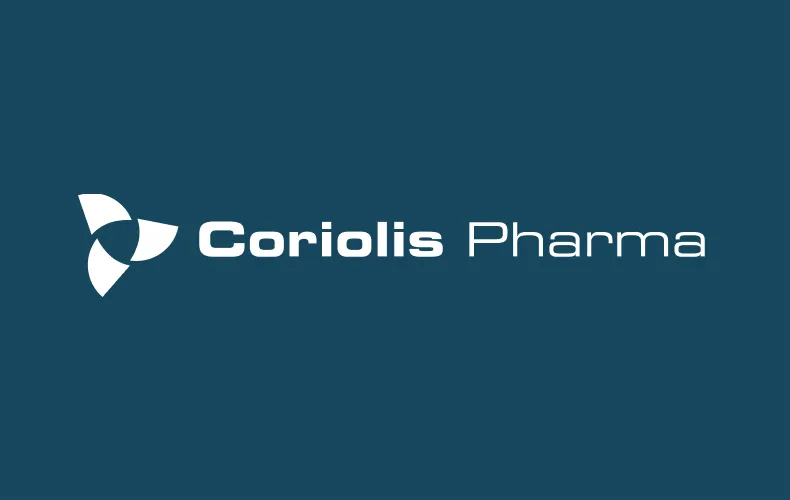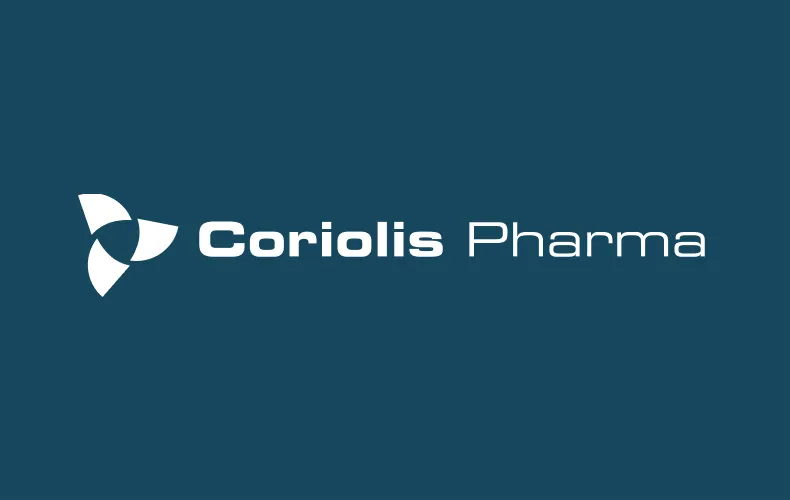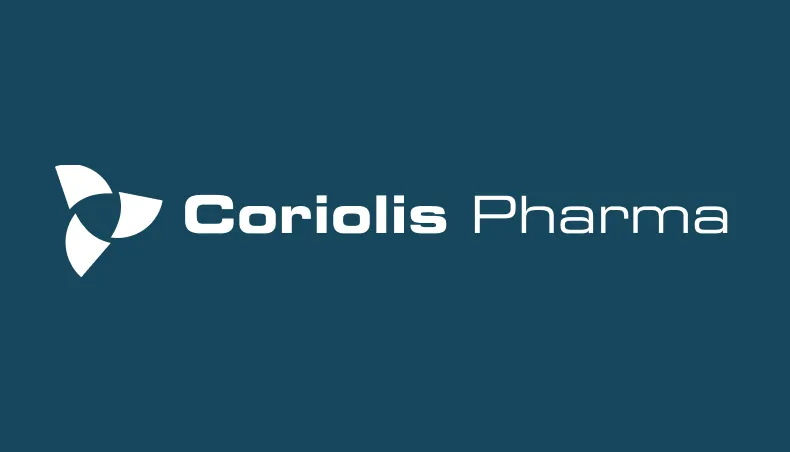Growing Importance of Mass Spectrometry from Drug Discovery through Commercialization and Life Cycle Management
Mass spectrometry (MS) has evolved from a niche research tool into a cornerstone of modern pharmaceutical development. Once limited by cost and complexity, MS now supports applications far beyond discovery — from characterization of critical quality attributes (CQAs) to GMP quality control and product release testing. Advances in instrumentation, computing, and data analysis have expanded its reach, while partnerships with expert organizations such as Coriolis Pharma ensure that drug developers can harness the full potential of MS to accelerate timelines, improve quality, and reduce risk.
Modern Mass Spectrometry Across the Drug Life Cycle
Mass spectrometry (MS) has become one of the most powerful analytical techniques for identifying and characterizing molecules in complex mixtures. In MS, ionized compounds — whole molecules and their fragments — are separated by mass-to-charge ratio and detected, producing spectra that display signal intensities across the range of measured ions. These spectra provide precise molecular fingerprints, allowing scientists to identify molecules based on characteristic masses or fragmentation patterns and to quantify them through signal intensities.
Two or three decades ago, the use of mass spectrometry in the pharmaceutical industry was limited by the time, cost, and expertise required. It was primarily a research tool for identifying drug targets, defining the critical quality attributes (CQAs) of candidate molecules, and analyzing metabolites. Experiments that once required weeks of measurement time now take less than an hour, thanks to a convergence of advances in instrumentation and computing power.
Progress in both domains has transformed MS from a specialized research technique into a practical tool that spans drug discovery, development, and life cycle management. The latest instruments are smaller, faster, and more sensitive, capable of resolving fine molecular differences that were previously undetectable. Equally important are the leaps in data processing and software — driven largely by advances in IT infrastructure — which now allow gigabytes of spectral data to be analyzed in real time. Complex mixtures that once required extensive chromatographic separation can now be resolved directly within the MS system or with minor, standardized chromatographic steps.
These improvements have opened the door for MS applications far beyond early characterization. Today, it supports quality control and assurance in regulated environments, including GMP manufacturing and even drug product release testing. Depending on the specific application, developers may rely on high-end research-grade systems that handle the most challenging samples or on streamlined, compliance-aligned instruments suited for routine use in GMP laboratories.
This evolution has effectively repositioned MS from a confirmatory analytical tool to a cornerstone of modern pharmaceutical analysis that continues to expand in scope as both hardware and software grow more capable.
One Technique, Endless Applications
MS is not only highly sensitive but also remarkably versatile, capable of detecting and characterizing complex molecules even within equally complex mixtures. It can be combined with most orthogonal analytical techniques, allowing researchers to extract complementary layers of information from a single sample. The most common configuration is liquid chromatography–mass spectrometry (LC-MS), in which chromatographic prefractionation separates analytes before detection. This coupling provides a more detailed molecular picture: each chromatographic peak can be directly correlated with a defined molecular species.
Depending on the analytical goal and the nature of the sample, MS can be applied in several modes. Intact, or “native,” mass analysis enables assessment of the entire molecular mass of a biotherapeutic, whereas digested or subunit analysis allows evaluation of specific fragments or degradation products. Mass spectrometry techniques are used to identify impurities and posttranslational modifications (PTMs), enabling precise monitoring of oxidation, truncation, or other structural changes that may occur during development or storage. These analyses are central to establishing biosimilarity or comparability between products manufactured at different sites or under different conditions.
Beyond its immediate diagnostic value, MS also provides a durable record of molecular integrity. Comprehensive spectra captured early in development can be revisited as a program advances, helping teams confirm that a molecule remains consistent as processes are developed, optimized or scaled. When deviations occur, such as changes in chromatographic behavior or unexpected degradation, MS data can help pinpoint the underlying cause, clarifying whether the change affects structure, function, or stability. In many cases, those insights enable the design of simpler, targeted assays for routine use, such as ELISAs or other quantitative tests tailored to specific impurities or modifications.
By combining adaptability with molecular-level precision, MS serves not only as an analytical workhorse but as a continuous thread of quality knowledge connecting discovery, development, and commercial life cycle management.
MS as a Decision-Making Engine
The detailed molecular insights obtained through MS empower more informed decisions at every stage of drug development. By revealing subtle changes that other techniques cannot detect, MS enables developers to assess PTMs, truncations, degradation pathways, and higher-order structures with exceptional precision. It also helps identify and quantify potential allergenic or immunogenic impurities that could affect product safety or efficacy, critical information for the design and control of biologics.
Importantly, MS provides the data necessary to understand not just what has changed in a molecule, but why. When a process deviation or product instability occurs, MS can help identify the molecular root cause. This capability allows teams identify variations and to intervene early, long before a quality issue reaches clinical or commercial stages.
The ability of MS to define and monitor CQAs that were previously inaccessible directly supports the development of higher-quality, safer biopharmaceuticals. Moreover, as analytical software continues to evolve, stored MS datasets can be reinterpreted with new algorithms to uncover emerging CQAs or refine existing characterizations, eliminating the need to repeat experiments. This reusability extends the scientific and regulatory value of each data set well beyond its original purpose.
Whether applied to demonstrate biosimilarity, confirm comparability across manufacturing sites, or guide process optimization, MS turns complex molecular data into actionable knowledge, helping developers maintain product integrity and patient safety across the entire lifecycle.
Power with a Price: The Practical Limits of Today’s MS
Despite remarkable advances in MS instrumentation and software, widespread adoption across the pharmaceutical industry continues to be constrained by cost and complexity. High-end MS systems remain expensive to acquire, install, and maintain, and their effective operation requires dedicated expertise in both experimental design and data interpretation. Generating meaningful data is not simply a matter of running the instrument; it depends on understanding how to plan and contextualize each analysis so that the results are truly informative.
Another practical limitation is that no single instrument can yet address the full diversity of analytical needs. Different MS platforms are optimized for different types of analyses — intact mass determination, peptide mapping, host-cell protein quantification, and others — making it common for advanced laboratories to rely on several complementary systems. This fragmentation of technology raises the barrier to entry, especially for smaller organizations.
Some classes of large, complex therapeutics still test the limits of current MS capabilities. Intact mass analysis of nucleic acid–lipid nanoparticles or viral vectors, for example, remains difficult because these entities cannot be efficiently ionized in their native states. Specialized techniques to address this challenge are under development, but commercially viable solutions are still emerging.
Until instrumentation becomes more affordable, standardized, and broadly accessible, MS will remain a highly specialized domain, indispensable for its insights but still concentrated in expert laboratories capable of mastering its technical and operational demands.
Innovation and Regulation Converge in MS
The next wave of innovation in MS is focused on expanding its applicability to a broader range of biotherapeutics while reducing costs and complexity. One major area of progress lies in data analytics: the integration of artificial intelligence (AI) and machine learning into MS software. AI-driven algorithms can learn from errors, refine pattern recognition, and improve both accuracy and speed. Just as importantly, intelligent software will be more seamlessly incorporated into laboratory information management systems (LIMS), enabling better data integration, cloud-based sharing, and eventually, standardized cross-platform interpretation of MS results.
As analytical capabilities continue to advance, so do regulatory expectations. Agencies increasingly view MS as a preferred tool for acquiring detailed molecular information to support regulatory filings and product release testing. A clear example is host-cell protein (HCP) quantification. While product and process-specific enzyme-linked immunosorbent assay (ELISA) has long been the gold standard, it provides only a cumulative measure of HCP content and requires the development of highly specific reagents — a process that can take more than a year. In contrast, MS can identify and quantify each individual HCP within a sample, providing far more granular insight in a fraction of the time. Recognizing these advantages, the U.S. Pharmacopeia (USP) introduced General Chapter <1132.1>, outlining best practices and three quantitative LC–MS approaches for HCP analysis.
Continued improvements in instrumentation toward smaller, faster, and more sensitive systems are likely to extend MS into new domains of CQA analysis and, over time, product release applications. Although true real-time, in-process monitoring via MS remains a technical challenge due to sample pretreatment requirements and data complexity, incremental advances in automation and integration could one day make it feasible as a process analytical technology (PAT) tool.
Together, these developments suggest a future in which MS is not only a cornerstone of product characterization and release but an active participant in real-time process control bridging the gap between molecular understanding and manufacturing execution.
Deep Expertise at Coriolis Pharma
As a contract research and development organization (CRDO) with long-standing expertise in formulation development and a comprehensive analytical portfolio, Coriolis Pharma is uniquely equipped to integrate MS as a sophisticated tool for the characterization and monitoring of CQAs. Our scientists combine deep technical experience with a clear understanding of how MS can generate meaningful, decision-ready data throughout the drug development process. This expertise is supported by state-of-the-art instrumentation, advanced digital platforms for data analysis, and ongoing participation in the development of new MS-based assays.
At Coriolis, MS analysis can be incorporated early, often as soon as a project is accepted, to establish a molecular baseline for each candidate. The resulting data serve as a foundation for confirming CQAs and tracking molecular integrity as a compound moves through preformulation, formulation, and process development. By continuously observing how different formulations, stresses, and process changes affect structure and stability, our teams can identify degradation pathways and mitigate risks proactively rather than reactively. MS thus functions as a central thread connecting early discovery insights with late-stage quality control and life cycle management.
Coriolis also works closely with leading instrument and software manufacturers, as well as academic collaborators, to push the boundaries of what current MS technology can achieve. We frequently participate in beta testing of new analytical solutions, ensuring that our clients benefit from emerging capabilities the moment they become viable. Recent collaborative efforts have focused on imaging and intact analysis of large biomolecular entities, challenges that remain at the frontier of MS innovation.
Our commitment to analytical excellence extends across the organization. In 2024, we expanded our GMP laboratory infrastructure and continued this growth through 2025, reinforcing our ability to deliver both exploratory and compliant testing within a single integrated framework. Together with a network of expert alliance partners, Coriolis supports clients across the entire drug development and commercialization spectrum from drug substance manufacturing to fill/finish and packaging.
By uniting early analytical insight, deep formulation expertise, and advanced MS technologies, Coriolis provides a uniquely seamless and science-driven approach to drug product development.


